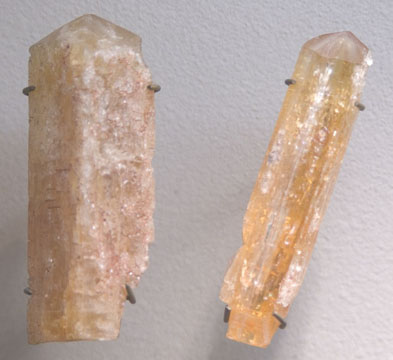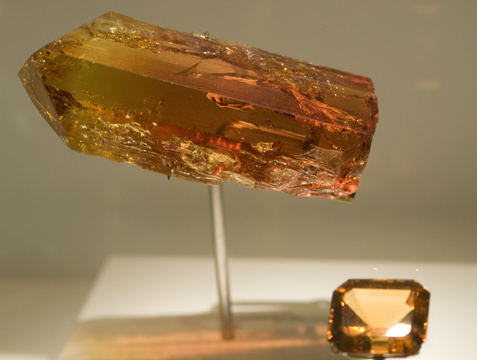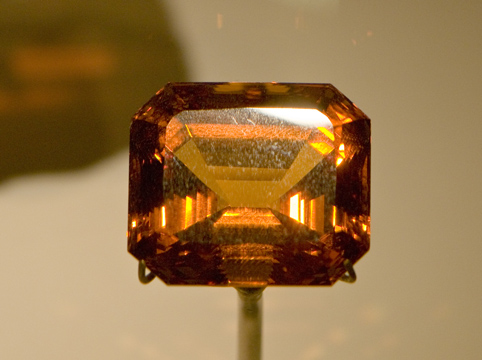

Crystal system: Orthorhombic
Chemical Formula/composition: Al2SiO4(F,OH)2
Crystal habit: often
well-crystallized and large flawless crystals are common
Hardness: 8
(used as test substance on Mohs' hardness scale)
Specific gravity: 3.5-3.6
Luster: Vitreous
(Glassy)
Toughness: brittle
(can be damaged when polishing)
Cleavage: Perfect
in one direction (causes problems with cutting & polishing).
Color: Colorless, Pale blue,
Yellow, Yellowish brown, Red (other colors from irradiation).
Localities: Many
locations world wide, excellent examples from Brazil
Common simulants: Rarely
imitated because of its abundance
Synthetics: none
Topaz is found in large, clear crystals. Some crystals weigh tens to hundreds of pounds, and they are often clear and flawless. Topaz is thus abundant and relatively inexpensive. The color range is rather limited, but irradiation and other techniques increase this; darker blue Swiss topaz for example is mainly irradiated. Though topaz is moderately hard, it has one perfect cleavage, which means it be easily split. The perfect cleavage makes topaz difficult to facet (careful directional grinding is needed) and also means that stones in settings can break. Topaz is susceptible to ultrasonic cleaning for this reason as well. When purchasing a stone, any indication of a rainbow effect or internal colors in the stone may indicate a parting along the cleavage plane.
Because of its abundance, topaz should be counted as
a
semiprecious gem unlikely to increase greatly in value. The most
important color is that of imperial topaz, which is a vivid
reddish-orange
in color. Other colors are less desirable.


Common topaz crystals


Precious "imperial" topaz crystal and cut stone
Return
to the syllabus main site